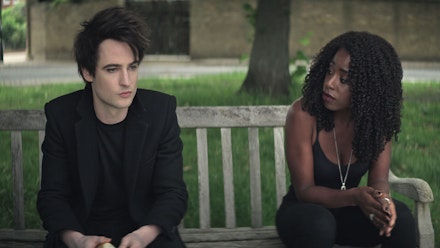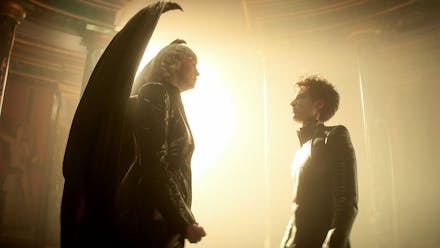As far as comic books are concerned, there is nothing quite like Neil Gaiman’s Sandman saga, a 75-issue, sprawling, dark fantasy epic considered the best of what the medium can be. For decades, Hollywood has sought to find a way to bring the tale of Morpheus (aka Dream) and his siblings, the Endless, to life on the screen, without success — until now.
The first answer to solving the puzzle came in looking at The Sandman not as a film adaptation, but a television series that could play to the episodic strengths, occasional anthology format, and shifting timelines of the source material. The second answer came in bringing Gaiman himself aboard the series to develop it. Gaiman’s hand is felt throughout as it faithfully adapts the comic nearly issue-by-issue with each episode. There are some slight changes, particularly with regard to representation and modernisation, as one would hope for in a contemporary adaptation, even for a comic considered progressive for 1989. From stylish direction and cinematography drawn straight from the comic panel, to the inclusion of even the most minor characters, and faithful dialogue that is both poetic and unpretentious, there’s more than enough fidelity to win over longtime fans.

Newcomers to the mythos, meanwhile, may be surprised at how quickly they’re thrown in the deep end and loaded up with exposition in the first two episodes. Make no mistake, the approach here is anything but grounded and streamlined. And despite its comic-book history and DC logo, it’s also emphatically not a superhero series revolving around fist fights and skyscraper-demolishing battles — even though the stakes, as they unfold, could not be higher. There’s nothing traditional — or predictable — at play here. By the third episode, things settle down enough to leave you on relatively stable ground, at least as much as any dreamscape could offer.
Tom Sturridge, not yet a major name, is pitch-perfect in making Morpheus flesh and blood.
Of course, the accuracy to the source material would do little if not for brilliant actors to bring these storied characters to life. Tom Sturridge, not yet a major name, is pitch-perfect in making Morpheus flesh and blood, deftly navigating his stoicism and distance with a sad, though not entirely charmless, sense of punk-Byronic loneliness. Morpheus is both the lead and the straight man, which with the wrong actor could make him boring. But Sturridge gives him an on-screen presence that’s hard to look away from, and much like the comics, it’s the wild cast of supporting characters that truly define who Morpheus is. Kirby Howell-Baptiste is equally impressive as Morpheus’ sister, Death, introduced in the sixth episode. She brings the effervescent love for humanity and joy for Earth to the character in a way that is quite moving in its empathy.
Morpheus’ journey to reclaim his stolen artifacts of power, with the help of librarian Lucienne (Vivienne Acheampong) and raven Matthew (Patton Oswalt), find him caught up in games of fate, deception and heartbreak with Lucifer (Gwendoline Christie), The Corinthian (Boyd Holbrook), and the gender-swapped Johanna Constantine (Jenna Coleman) — the last being arguably the best on-screen portrayal yet seen of the famed occultist. But it is David Thewlis’ John Dee, a pyjama-clad, escaped mental patient in possession of Morpheus’ Ruby, who steals the show during the first half of the season, and becomes the centre of the chilling fifth episode, ‘24/7’. It is in John Dee’s pathetically human quest to steal hope from people in order to reveal the truth that The Sandman sees its greatest strength revealed. What was true of the comics is true here: for all the mystery, horror, and personified concepts older than the universe, The Sandman is about the lives of ordinary people — the waitress, the kindly woman who offers you a ride, the romantic and the liar, and how they weave a world for such magic to exist, through their dreams and nightmares.




